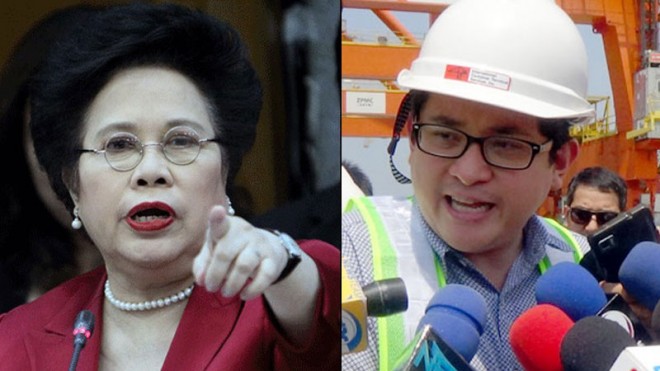
Senators Miriam Defensor-Santiago and Paolo Benigno “Bam” Aquino IV have filed resolutions calling for a study on the authorities’ preparedness to respond to a massive temblor—should another one hit the country. FILE PHOTOS
With updated warnings from experts about active earthquake fault lines, senators are seeking an assessment of the Philippines’ readiness to cope with a massive temblor—should another one hit the country.
Senators Miriam Defensor-Santiago and Paolo Benigno “Bam” Aquino IV have filed resolutions calling for a study on the authorities’ preparedness to respond to such a calamity.
Their call comes as the Philippine Institute of Volcanology and Seismology (Phivolcs) made public its detailed map of the so-called 100-kilometer West Valley Fault, which traverses parts of Metro Manila, and the provinces of Bulacan, Laguna, Rizal and Cavite.
According to the experts, the fault line could generate a destructive
7.2-magnitude quake.
Warning from expert
In her resolution, Santiago said she wanted to look into reports that Metro Manila was not ready for a high-magnitude temblor.
She filed the measure after the second of two major tremors struck Nepal on May 12 with a magnitude of 7.3, killing some 65 people. A more disastrous quake with a magnitude of 7.8 struck Nepal on April 25, killing more than 8,600 people.
“Congress must consider drafting legislation that will spur government agencies to urgently implement measures aimed at mitigating the impact of a high-magnitude earthquake,” Santiago said.
50,000 deaths
She cited reports quoting urban planner Felino Palafox Jr. as warning that in case a 7.2-magnitude quake hits the National Capital Region, an estimated 20 percent of structures would collapse.
Palafox cited a 2004 study by the Japan International Cooperation Agency (Jica) that some 50,000 people would be killed if a megaquake should hit the National Capital Region.
At the same time, Palafox gave suggestions on what could be done to mitigate the effects of such a temblor.
One measure is identifying a 10-hectare evacuation center, followed by retrofitting structures that may collapse and the transfer of structures above fault lines.
Palafox also said that addressing earthquake hazards was cheaper than rebuilding.
Impact on Metro Manila
Aquino said that since the Philippines was prone to natural disasters, there was a need to institutionalize systems and programs that would improve the disaster resilience of local communities.
He said a 2004 Metro Manila earthquake impact reduction study showed that a potential rupture of the West Valley Fault would lead to 34,000 deaths, 114,000 injuries and damage to 40 percent of residential buildings.
One thing that needs to be looked at is the strengthening of public structures, Aquino said.
To do this, there should be an urgent audit of buildings, bridges and other structures to determine if they comply with safety standards and regulations, he said.
Magnitude 8-10
“A significant factor in ensuring earthquake safety is ensuring the ability of houses, buildings and all public infrastructure to withstand earthquakes even with magnitudes of 8 to 10,” he said.
Aquino also said the locations of houses and buildings must be checked for safety based on the recently published Valley Fault System Atlas of Phivolcs.
“We should learn from what happened in Nepal, Cebu and Bohol. Let us not wait for many lives to be lost and for a lot of properties to be destroyed,” Aquino said.
The Philippines is no stranger to deadly earthquakes.
In 2013, a 7.2-magnitude tremor struck the popular tourist destination Bohol, toppling several buildings, including historic churches, and killing more than 200 people.
That earthquake also badly affected the province of Cebu.
More than 1,600 people were killed when a 7.7-magnitude earthquake struck Luzon in July 1990, with Baguio City being hit the hardest.
That temblor brought down hotels, government buildings and homes in the mountain city. Power, water and communications lines were destroyed in the quake, which was also strongly felt as far away as Metro Manila.
RELATED STORIES
Do you live in quake zone? New Phivolcs maps trace 100-km West Valley Fault
NHA urged to relocate people along West Valley Fault